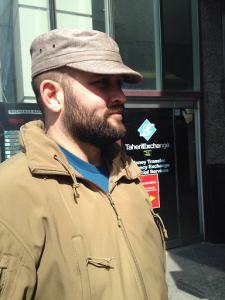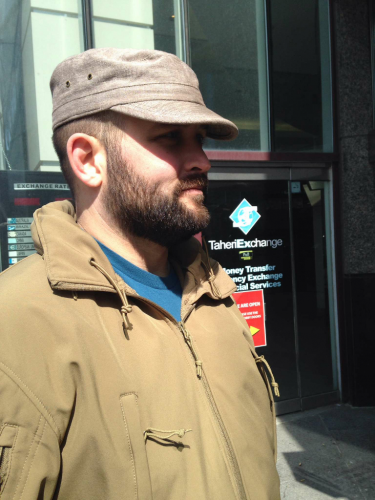Esri Technical Associate Certification: how I passed the test
A few months ago, I decided to obtain the Esri Associate certification for ArcGIS Desktop and wrote about my reasoning here. I wanted to take the exam for a few reasons: First, I wanted to have something that could show prospective employers my proficiency with this platform at first glance. Second, I wanted to improve my changes of getting hired in the GIS field. And for the third reason, I wanted to have a bookmark on where my competencies were as I moved towards other platforms for geographic analysis, such as the FOSS4G suite of tools such as QGIS and PostGIS. I studied for the test, using an excellent-yet-somewhat-outdated book as my primary tool to study for the test and the ArcGIS help pages to fill in the gaps while eschewing any formal training course either from Esri or third parties. I decided to study on my own as I didn’t see the point of paying upwards of $1200 (US) for a $225 (US) qualification, and as a fairly recent university graduate I certainly couldn’t afford that price point. Instead, I took a risk and on one quiet Saturday in Toronto, I took the plunge and attempted the test.
On Taking the Esri Technical Associate Certification Test
I had my exam taken at Yukon Consulting Services in Toronto near the Finch subway station. This was a small consultancy that doubled as a certified Pearson examination facility. This was the first (and maybe my only) certification involving testing anything towards my knowledge of a software suite. Like I explained in the earlier articles, the process of signing up for the test and getting set up was uncomplicated: I walked in, signed some digital paperwork with a stylus then walked in a dimly-lit room with desktop computers. I was alone for most of the test, save for a pair of cameras peering overhead and some other furniture wrapped in plastic and another person who quietly ventured in halfway through for a different examination.
“95 questions and few surprises” sums up my experience of the test. I didn’t know the score I needed to pass (no one outside Esri does, as they don’t make the score you need to pass public) yet I knew it was possible to fail. I made the goal of getting at least 80% of the questions correct while I was studying. The test was multiple-choice as advertised, and the user interface allowed me to make special marks on the questions so that I when I wasn’t sure, I could skip ahead and return to that question with a good idea of my thoughts when I passed it. Apart from having to phone to be able to enter the front door of the office tower (something I didn’t know of beforehand), there were no real hiccups throughout the entire testing process.
The test itself was exactly as advertised: 95 multiple-choice or multiple-select questions, and 150 minutes. My strategy for taking this test should be a familiar one to anyone who has taken multiple-choice questions as part of their academic experience. It consists of a ‘multiple-pass’ system where starting with a quick pass to solve all the easy questions right off the bat so that all your energy can get to the real problem-solving. If I couldn’t get an answer right away, I made a mark or two to say “not a final answer, but maybe these” then I moved onto the next question. For my second pass, I danced through all the questions I didn’t go through on the first pass. I took my time on this pass to ensure that I knew what the question was asking before I solved it. Because I didn’t touch these questions on my first pass, I was able to internalize many of the components either by absorbing it in the back of my head, or answering related questions that I clearly understood. For the third pass, I verified each and every question. This is important to me, as my mind can play tricks on me especially concerning key words. I paid attention to the questions I hit on my first pass, because if there were word games, those were the questions most likely to be affected.
With this test, I was able to do a third pass to verify my answers twice before the clock ran out. From there, I returned the notepad provided by the examiner, and walked down the dead-silent hall, and into the elevator. Later that day I received an email from ESRI confirming that I took the test and that my results would follow. A couple days later, I received an email that explained that my results were in, and invited me to login into their system to see my status. Here, I saw a pass much to my satisfaction. A couple months of part-time studying and $225 (US) later, I have a certificate that backs my claimed proficiency with ArcGIS Desktop 10.3.
My Training Plan Succeeded: A Summary on How I Passed
There is no question that the test was challenging. The subject matter was dense, and the answers that the questions seek are specific in an environment where there are many routes to the solution of a geographic problem. But this test can be passed, and my training formula I talked about in the second article worked for in my case. If you’re proficient with learning at your own pace I would recommend following what I did: First, you should make a list of learning items you can cross off as a roadmap. You can find that list at the “skills measured” section on the ArcGIS Desktop Associate 10.3 homepage. Next, you should Buy the book. It’s a bit outdated as it is written for ArcGIS Desktop 10.1 but the lessons taught and exercises in the Esri ArcGIS Desktop Associate Certificate Study Guide integrate well in the context with ArcGIS Desktop 10.3. While there have been a series of changes between the versions of the ArcGIS Desktop, the overall workflows and concepts remain the same. Next, you should read through the book, do all the examples, take in all the extra readings that the book recommends, and then grab a trial of ArcGIS so that you can try some of the examples in the exercise book using ArcGIS Pro. The summary of the test requirements on the Esri Website state clearly that ArcGIS Pro will be on the test. You should do what I didn’t, and heed that advice. Once you are done that, take some time to familiarize yourself with the changes between ArcGIS 10.1 and ArcGIS 10.2 (pdf), as well as the changes between ArcGIS 10.2 and ArcGIS 10.3. Finally, before you take the test, look long and hard at the list of skills measured on the ArcGIS Desktop Associate 10.3 homepage. Are you sure you understand all the topics listed? Have you done all these in the workplace, and if not, have you tried running through a couple of exercises which require the use of these techniques? If the answer is yes, then you might be ready for this exam.
If you are experienced with ArcGIS Desktop and you prefer classroom or virtual classroom over self-paced open-ended study, I recommend using 3rd-party instruction companies such as EGIS Associates. It’s much less expensive that the course that Esri offers and generally includes a road-map for you to be confident when you walk in the examination door. They can’t guarantee everyone who takes their course will pass the test, but their business model requires value-for-money including the confidence for those who are ready to take the test in actually knowing they’re ready to take the test. My method doesn’t include that feeling of confidence, which will be nerve-wracking up until you take the test.
After the Test: My Thoughts since Obtaining the Qualification
If you’re interested in taking the test out of curiosity, if you enjoy collecting qualifications for the challenge, if you want to apply to job that explicitly requires this qualification, or if your office is offering the exam at no cost to you, then I recommend taking this exam. It’s challenging, and you will feel a sense of accomplishment once you passed the beast. As for as others who don’t need to take the test to make any employment requirements, this takeaway is for you: Since I’ve taken the test in March, I’ve sat long and hard about how worthwhile the test was in my career goals. Having a credential that backs up my proficiency with ArcGIS Desktop/Pro hasn’t get my any closer to finding work in the geospatial field in the Toronto area. This isn’t the stated goal of the program, but I find that this is the main reason why people push for qualifications: To garnish their resumes in the hope of finding better work. In studying for this qualification, I became more familiar with some portions of ArcGIS that I never used in my day-to-day work. But since this test, I have let that knowledge lapse for the same reasons why I never learned it before studying for this certification.
On the plus side, this made for a nifty $225 merit badge on my Linkedin profile, as there is an option to directly embed the below certificate into your Linkedin page through a couple of hyperlink clicks. This is a nice touch.
If you’re looking for work and none of the places you are seeking employment from seem to require any qualification outside the post-secondary realm, I leave you with one piece of advice: – make, create… Don’t take. At the end of the day, a better portfolio or list of accomplishments shows a better candidate. People are generally more impressed by something they can see and touch as opposed to someone else’s word for it. The qualification I received speaks for my proficiency in knowing the “in’s and out’s” of one particular platform. It doesn’t speak to my ability to make beautiful maps my skill in distilling complicated sets of data into observable lessons that anyone can grasp.
An Invitation for Those who are Considering Following in my Steps:
If you have any questions about my experiences or advice on taking the test, I welcome you to reach me on Twitter (@brian_bancroft) or on various slack channels such as gistribe.slack.com or gisdevs.slack.com. On these channels as well as with #gistribe on twitter, you will no shortage of advice from people who have had similar challenges as I found when I prepared for the test. I wouldn’t have passed if it wasn’t for the assistance I received from people within these mediums along with the hours I put in for study.









Can i take the Esri Technical Associate Certification without taking the entry level first, because to spent extra 250$ for entry level and have enough knowledge and experience to pass the associated one.
Yes.
I’ve been using Esri products for two years on a day-to-day basis at that point , and was able to pass it through a well-written (but obsolete) book and the company website.
I’m usually horrible at tests.
I jumped straight to the Associate. I’m also confident that if I wanted to, I could nail the Professional. But that will be for another day.